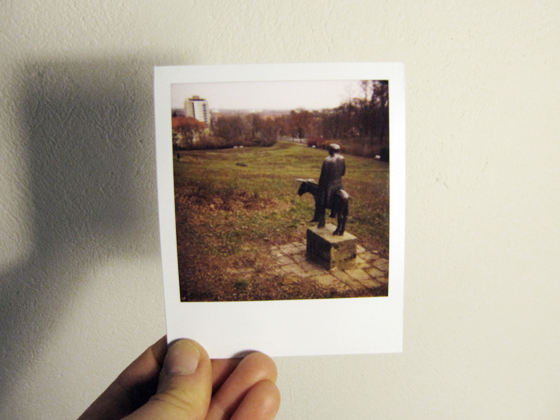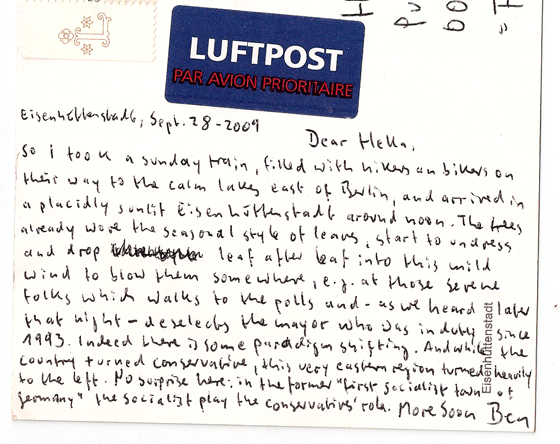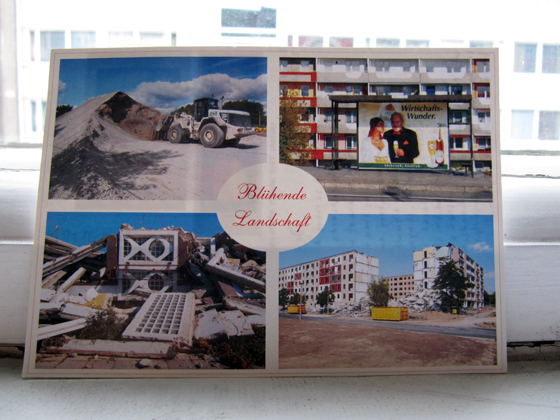
Eisenhüttenstadt, 21 November 2009,
I went to Eisenhüttenstadt once again this weekend but didn’t get a chance to see more than the incredibly vast reaches of the brand new paper mill that flanks the railroad from Frankfurt an der Oder. However, there was another interesting perception unintentionally resuming a thought that arose Thursday night in a Berlin-Friedrichshain café. A young woman, aged 24, and me discussed whether there is a particular East-German (maybe: Post East) condition, still differing from a general western way of perception, values and behavior.
Explicitly representing her age group she strictly negated this assumption, while I – being some inches older – tend to support it.
Then tonite I watched the remarkably 2008 movie “Novemberkind” on dvd. The relation between East and West of Germany marks a central leitmotif. In the “making of”, the lead actress, Anna-Maria Mühe, who is exactly the same age (born 1985) and also born in the GDR, was asked a similar question. Her answer coincided: she negated too, but added the impression that it might be different to those who are a bit older.
So, my small sample of two opinions indicates the “Post East” condition might not only be an issue of origin but simply of age. And – my additional guess – on milieu as well. The younger, well-educated, and creative become Post-Posteast and simply refer to values and symbols assorted on criteria beyond plain east-west pigeonholes.
Best Regards,
Ben
____________________________________________________________________________________
Postcards from Post-East / by Ben Kaden
This series presents postcards from places that used to belong to East German territory, and which 20 years ago shifted from the socialist East block to the Western market economy. The author, Ben Kaden, currently lives in two cities: Berlin (East) and Mannheim (West). He is originally from Eisenhüttenstadt, a city once designed to be the jewel of GDR’s socialist planning – but today rather worn out and partly in decline. Using the postcard as a medium, this series crosses the gap between the pre-1989 and the post-1989 conditions, and joggles a physical medium of the past with today’s digitality.


